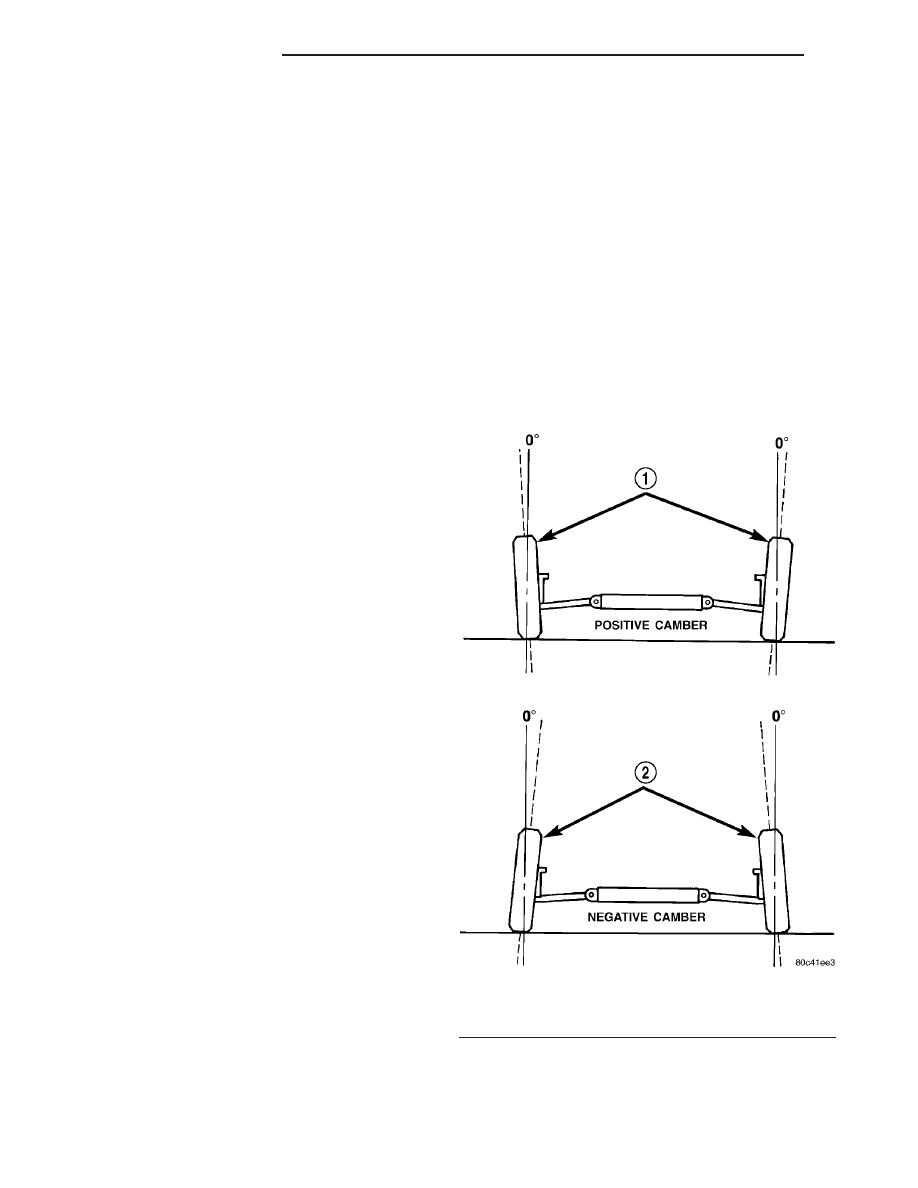Chrysler Town, Dodge Caravan. Manual - part 23

WHEEL ALIGNMENT
TABLE OF CONTENTS
page
page
WHEEL ALIGNMENT
DIAGNOSIS AND TESTING - SUSPENSION
. . . . . . . . . . . . . . . . . . . . . . 49
ALIGNMENT . . . . . . . . . . . . . . . . . . . . . . . . . 51
STANDARD PROCEDURE - CURB HEIGHT
MEASUREMENT . . . . . . . . . . . . . . . . . . . . . . 54
. . . . . . . . . . . . . . . . . . . 55
WHEEL ALIGNMENT
DESCRIPTION - WHEEL ALIGNMENT
Vehicle wheel alignment is the positioning of all
interrelated front and rear suspension angles. These
angles affect the handling and steering of the vehicle
when it is in motion. Proper wheel alignment is
essential for efficient steering, good directional stabil-
ity, and proper tire wear.
The method of checking a vehicle’s front and rear
wheel alignment varies depending on the manufac-
turer and type of equipment used. The manufactur-
er’s instructions should always be followed to ensure
accuracy
of
the
alignment,
except
when
DaimlerChrysler Corporation’s wheel alignment spec-
ifications differ.
On this vehicle, the suspension angles that can be
adjusted are as follows:
• Front Camber (with camber bolt package and
standard procedure)
• Front Toe
Check the wheel alignment and make all wheel
alignment adjustments with the vehicle standing at
its proper curb height specification. Curb height is
the normal riding height of the vehicle. It is mea-
sured from a certain point on the vehicle to the
ground or a designated area while the vehicle is sit-
ting on a flat, level surface. Refer to Curb Height
Measurement in this section for additional informa-
tion.
Typical wheel alignment angles and measurements
are described in the following paragraphs.
CAMBER
Camber is the inward or outward tilt of the top of
the tire and wheel assembly (Fig. 1). Camber is mea-
sured in degrees of angle relative to a true vertical
line. Camber is a tire wearing angle.
• Excessive negative camber will cause tread wear
at the inside of the tire.
• Excessive positive camber will cause tread wear
on the outside of the tire.
CROSS CAMBER
Cross camber is the difference between left and
right camber. To achieve the cross camber reading,
subtract the right side camber reading from the left.
Fig. 1 Camber
1 - WHEELS TILTED OUT AT TOP
2 - WHEELS TILTED IN AT TOP
2 - 46
WHEEL ALIGNMENT
RS